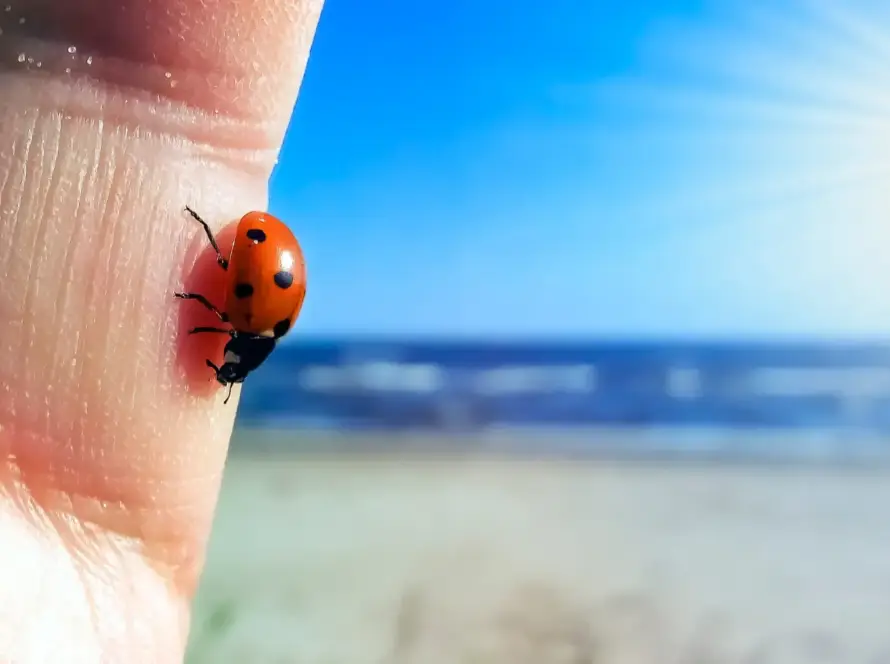
Being polysexual is like having a VIP list for attraction.
Some genders make the cut.
Others don’t.
And no, that’s not “being picky.” It’s just how attraction works.
But because the world loves neat labels, polysexuality often gets misunderstood.
People confuse it with polyamory.
Nope.
Others mix it up with bisexuality.
Not quite.
It’s its own thing, and it deserves more attention. S
o let’s talk about what it means to be polysexual, how it affects relationships, and why it’s not just a Gen Z trend.
Polysexuality: What It Is and What It’s Not
People hear “poly” and immediately assume multiple partners.
That’s polyamory.
Polysexuality is about attraction, not relationship structure.
You can be polysexual and date one person.
Or many.
Or no one at all.
Your relationship status doesn’t define your identity.
It’s also not bisexuality.
Bisexuality means attraction to two or more genders.
Polysexuality means attraction to multiple genders, but not necessarily all.
Think of it like a buffet.
You load up your plate with the foods you like, but you’re not eating everything.
That’s not a phase.
That’s just taste.
Polysexuality also isn’t pansexuality.
Pansexuality means attraction to people regardless of gender.
Polysexuality still considers gender but in a way that’s more specific.
Imagine walking into a bookstore.
A pansexual person might love any book, as long as the story is good.
A polysexual person loves multiple genres but isn’t necessarily drawn to every section.
The crime thrillers and historical dramas might stay on the shelf.
Some people try to argue that polysexuality is “too vague.”
But attraction is vague.
Nobody sits down with a checklist to justify why they like certain people.
Attraction is a mix of chemistry, preference, and randomness.
A straight person doesn’t like all people of the opposite gender.
A gay person doesn’t like all people of the same gender.
So why do people expect polysexuality to be perfectly defined?
The truth is, labels aren’t about making other people comfortable.
They’re about giving people the language to describe themselves.
Polysexuality just happens to be one of those labels that makes people pause and go, “Wait, hold on… what?”
And that’s okay.
It just means it’s worth talking about.
Dating as a Polysexual: It’s Not Just About Preference
People love trying to decode polysexuality like it’s a riddle.
“So, you like multiple genders but not all? What does that mean?”
It means exactly what it sounds like.
Some people will always make your heart race.
Others?
Not so much.
And that’s okay.
Dating as a polysexual person means dealing with weird questions.
Some people think it’s a menu where you just pick what looks good that day.
Others assume it’s about being indecisive.
Spoiler alert: it’s not.
Nobody asks straight people why they only like the opposite gender.
So why does everyone suddenly need a PowerPoint presentation when polysexuality comes up?
The truth is, attraction isn’t logical.
It’s not a list of rules.
It’s a gut feeling.
Polysexual people just happen to have a more specific set of “types” than some others.
That’s not confusion.
That’s clarity!
But here’s where it gets tricky, dating apps.
If you’re polysexual and swiping through profiles, you’ll see the same problem over and over again.
Some people don’t believe polysexuality exists.
Others assume it’s just a fancy way of saying bi, pan, or confused.
Then there are the ones who think it’s an invitation to debate your identity.
And let’s not forget the assumptions.
Some people will assume you have a gender “ranking system.”
Others might think you have a specific quota to fill, like a romantic bingo card. “Oh, you’ve dated this gender, but not this one? Interesting.”
No, Brad. I’m not collecting Pokémon.
Being polysexual in the dating world also means navigating awkward conversations.
If you’re with someone who doesn’t understand, they might get jealous over your attraction to multiple genders.
They might worry they’re not “enough.”
But here’s the thing, polysexuality isn’t about wanting more options.
It’s about who naturally catches your attention.
Just like anyone else, you’re drawn to specific people, not checking off a list.
The best relationships for polysexual people are with those who get it.
Those who don’t treat it like a mystery to solve.
Those who don’t expect you to “explain” why your attractions work the way they do.
Because really, who can explain attraction?
You like who you like.
That’s the whole point.

How Polysexuality Shapes Romantic Relationships
Polysexuality adds an extra layer to dating.
Some people embrace it right away.
Others need time to process it.
And then there are the ones who think they can convince you to “expand” your attractions.
As if that’s how attraction works.
One of the biggest challenges is finding partners who respect your identity.
Some assume polysexuality is a phase.
Others act like it’s a test they need to pass. “Oh, you like multiple genders but not mine? What’s wrong with me?”
Nothing, Jeff.
It’s just not your day.
But it’s not just about finding an understanding partner, it’s about finding one who doesn’t see your identity as a problem to solve.
Some people will treat polysexuality like an obstacle they need to get past.
They’ll try to “figure out” what your attractions really mean, as if you’re hiding some secret preference.
Others will straight-up ask, “Well, could you ever be into me?” as if attraction works like negotiating a job offer.
If you’re in a monogamous relationship, polysexuality doesn’t just disappear.
It’s still part of who you are.
Some partners understand that.
Others feel insecure.
They might assume your attractions mean you’ll eventually “want more” or get bored.
But being polysexual isn’t about needing variety, it’s just about the way attraction works for you.
Loving one person doesn’t erase the fact that you’re still attracted to multiple genders.
And that’s not a threat to the relationship.
For those in open or polyamorous relationships, polysexuality can add complexity in a different way.
Some partners might assume you’ll want to date a wide range of genders at the same time, which isn’t necessarily true.
Just because you can be attracted to multiple genders doesn’t mean you always are at any given moment.
It’s not a to-do list.
It’s just how your attractions naturally form.
Polysexuality can also make dating exciting.
It means your attractions don’t fit into a pre-set mold.
You might find yourself drawn to different energies, different personalities, different ways of expressing gender.
It keeps things dynamic, but it also makes it clear that attraction is about connection, not just categories.
At the end of the day, the biggest factor in a successful relationship as a polysexual person is communication.
Some partners will have questions, and that’s fine, curiosity is good.
The issue comes when they doubt your identity instead of trying to understand it.
No one should have to explain or justify why their attractions work the way they do.
If someone truly values the relationship, they’ll trust that polysexuality is just a part of who you are, not something they need to “figure out.”
The World’s Weird Obsession with Labeling Attraction
Society loves categories:
Straight.
Gay.
Bi.
Done.
But polysexuality?
It refuses to fit into a simple box.
That makes some people uncomfortable.
Humans like things to be black and white.
Polysexuality is full of shades of gray.
People want attraction to be neat and predictable.
They want to hear “I like X and Y” or “I like everyone.”
But polysexuality doesn’t give them that.
It says, “I like multiple genders, but not all.”
And for some reason, that makes people’s brains short-circuit.
This obsession with labeling attraction comes from a deep need to understand things.
But here’s the kicker: not everything needs to be understood to be valid.
No one questions when someone says they’re only into brunettes.
No one demands a detailed breakdown of why someone prefers tall people.
But the moment you say you’re polysexual, suddenly, it’s an interrogation.
People also struggle with labels that don’t fit into mainstream conversations.
Straight and gay?
Easy.
Bisexual?
Getting better.
Polysexual?
“Wait, is that even a thing?”
Yes, Chad.
It’s been a thing.
Just because you haven’t heard about it doesn’t mean it’s new.
The funniest part?
Even the labels that people do accept aren’t actually that rigid.
Bisexuality, for example, is sometimes defined as attraction to two or more genders.
Pansexuality is attraction regardless of gender.
But not every bi or pan person feels the exact same way about attraction.
It’s all fluid.
Yet, when polysexuality comes up, suddenly, people want to draw strict lines around it.
At the end of the day, attraction is personal.
It’s not a science project.
It doesn’t need to be dissected and labeled to be real.
Polysexuality exists, whether or not the world is ready to accept that attraction isn’t as simple as people want it to be.
And honestly?
That’s their problem, not yours.
Why Polysexuality Isn’t a Trend… It’s Always Been Here
Some people think polysexuality is new.
A shiny label invented by social media.
But history says otherwise.
Attraction has always been fluid.
It just didn’t always have a name.
Ancient cultures had complex views on gender and attraction long before Western society decided everything needed to fit into neat categories.
Many indigenous communities recognized more than two genders.
Some even had words for people who were attracted to multiple genders but not all.
The idea that attraction is either “gay, straight, or bisexual” is actually a modern oversimplification.
Take ancient Rome, for example.
Back then, nobody was worried about whether their attraction fit into a specific label.
People had relationships with different genders based on personal preference, status, and cultural norms.
Attraction wasn’t boxed in… it was just part of life.
Same with ancient Greece.
People openly wrote about their desires for different genders without obsessing over whether their attraction was “valid.”
Even outside of Europe, there are countless examples.
Many indigenous North American cultures had terms for gender identities and attractions that didn’t fit into today’s binary way of thinking.
The Navajo recognized the “nadleehi,” people whose gender identity and attractions didn’t fit into strict categories.
In pre-colonial Philippines, the babaylan: shamanic leaders who were often gender-nonconforming, were known to have relationships with multiple genders.
So, no, polysexuality isn’t some new-age trend.
The only thing that’s new is people finally having the words to describe what they’ve always felt.
Society might just be catching up, but polysexuality has always existed.
It’s been here, quietly thriving in history, waiting for the world to finally take notice.
Conclusion
Polysexuality isn’t complicated, it just doesn’t fit into society’s obsession with simple labels.
Attraction is personal, fluid, and sometimes hard to explain, but that doesn’t make it any less real.
The key to any successful relationship, no matter your identity, is open and honest communication. If your partner truly values you, they’ll listen, learn, and respect how you experience attraction.
One of the best ways to strengthen communication and deepen your bond is through fun, meaningful conversations.
That’s where the Better Topics Card Game for Couples comes in.
It’s designed to spark engaging discussions, help couples connect on a deeper level, and keep relationships playful and exciting.
Unlike other card games, it features repeatable questions, so you can play it over and over without running out of ways to connect.
If you want to improve communication in your relationship while having fun, this is the perfect tool.
Whether you’re navigating conversations about attraction, relationship goals, or just getting to know each other better, this game keeps things fresh and engaging.
Grab your deck today, sit down with your significant other, and start playing, because the best relationships are built on laughter, love, and great conversations.









